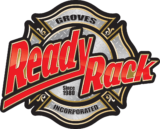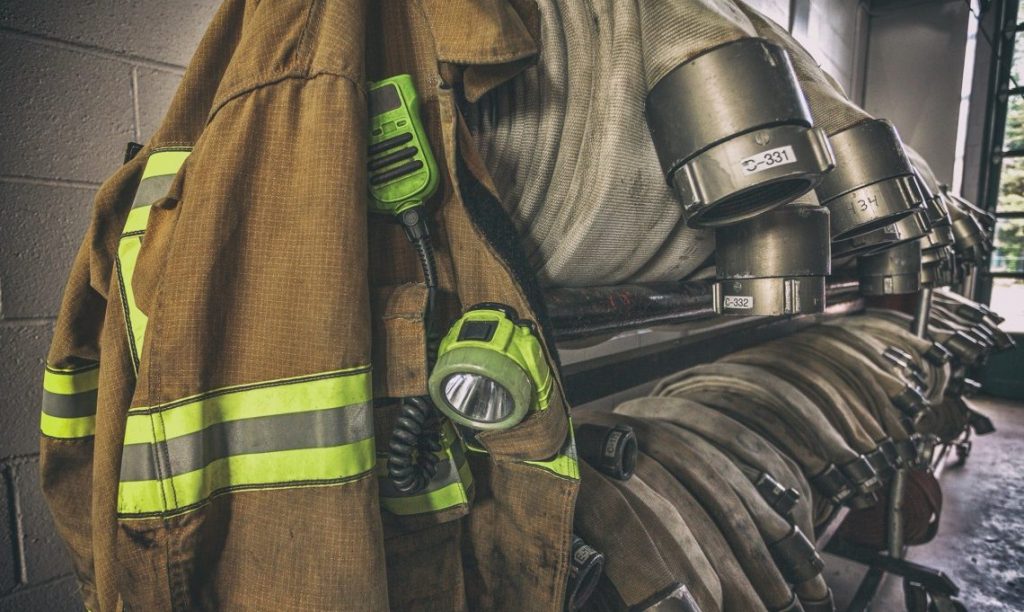Follow these steps to ensure your PPE is ready to protect you when you need it most.
By this point, every firefighter should know the by-products of combustion, the stuff in smoke and gases, cause cancer. Every firefighter should know their protective clothing collects, holds and releases toxic gasses from the fireground. And every firefighter should know inspecting and cleaning their gear after a fire is critical to their long-term health and safety.
In fact, the National Fire Protection Association now requires firefighter PPE be laundered after every fire. While that’s been a best practice for several years, it is now part of the 2020 edition of NFPA 1851, the standard on how to select, care for and maintain structural firefighting protective clothing.
“Things shouldn’t be dirty looking. There’s no excuse for it,” says Jeffrey Stull a long-time firefighter PPE expert who is a member of the NFPA 1851 committee, president of International Personal Protection and author of “PPE Made Easy.” His words ring especially true given the widespread awareness of firefighters’ cancer risks and the role PPE plays. “Clothing is dirty just by virtue of being on a fireground, even if dirt and contamination are not visible.”
Keeping PPE clean may seem easier said than done, but there are some key steps firefighters and officers can take to ensure firefighter PPE does what it is intended to do — protect firefighters.
Protect the Firefighter
The first step takes place on the fireground. Studies show that conducting on-scene gross decontamination will reduce the amount of carcinogens firefighters absorb during the ride back to the firehouse. Gross decon can be done with a bucket, simple dish soap, a soft brush and water. To get water, some departments use a reducer to connect a garden hose to their pump, others use a trash line. Bucket, soap and brush fit easily in a compartment. Removing and bagging PPE on the scene further reduces the risk of contaminating the rig’s cab and the firefighters inside. Here’s a quick video showing how to do on-scene gross decon.
At the station, wear EMS exam gloves to inspect and separate PPE. The gloves will help protect the firefighter from the contaminated PPE. In Sweden, fire researchers developed a cleaning model that goes well beyond just gloves and includes wearing SCBA.
Stull says to inspect the gear for damage by checking trim and seams for wear and separation. Tears holes and seam separations must be repaired. Stull advises to only use reputable repair shops that specialize in firefighter PPE. If the cost of repairs exceeds the value of the gear or if the gear is too damaged, it will need to be retired from service. NFPA also requires gear be retired once it reaches 10 years past its manufacture date. Checking the label is one way to monitor gear’s overall wear. Faded, badly worn labels are a good indicator of the gear’s overall condition, he says.
Some heavily soiled gear will require pre-wash treatment. This can be in the form of a pre-wash cycle in the machine, spot treating with a cleaner or both. Stull says adding an extra rinse cycle is another way to remove stubborn stains. He recommends caution when buying cleaning agents and detergents. There are a lot of detergents out there but be skeptical of those not made specifically for firefighter PPE by a known, reputable manufacturer.
Wash Day
It is important to follow the PPE manufacturer’s instructions for cleaning as well as the guidelines laid out in NFPA 1851. Those will include instructions to separate the liners from the shells, turning the liners inside out and only washing shells with shells and liners with liners. Stull says there is some debate over whether to wash hoods with shells or liners; he prefers washing them with liners. For gloves, there’s no debate. Machine washing simply doesn’t work; hand washing is the only way to go, he says.
There is also no real debate when it comes to residential-grade washing machines versus professional fire service-specific washer/extractors. In fact, NFPA 1851 specifically says not to use washing machines designed for home or laundromat use. Fire service-specific machines have programmed cycles made for turnout gear, they properly disperse detergent, run at the correct temperature, spin at the right speed and do not agitate the clothing — all critical to the integrity of the clothing, Stull says.
“This is complex clothing; you cannot wash it in household machines,” Stull says. “It’s one thing if you wash a canvas bag incorrectly. You’re not relying on it to protect you in a burning building.”
Brent Hostler, president of Groves Inc., says the investment can be a little intimidating for a department making the jump from a residential laundry machine to a professional-grade one made for firefighter PPE. “There are some great machines available that, while requiring additional installation and maintenance considerations, will eventually become pretty routine to operate and care for,” he says. There are, he says, some newer models that take some of the pain and costs out of installation, often connecting to existing electrical and water supply at the station.
When it comes to professional machine longevity, Hostler says you can get 10 or more years out of one depending on how frequently it is used and if it is properly installed and maintained. “For departments that are diligent in inspections and catch a loose or broken gasket before water has a chance to leak and potentially interact with electrical components of the machine, the life span stands to be longer,” he says.
Ready for Service
Industry experts and PPE manufacturers continue to look for a way to reliably tell how clean PPE is after laundering. So far, the only reliable way to test it is to cut it up, and that’s not practical for department use. Stull says that clean smells like nothing. If the gear comes out stinking of smoke, it’s not clean. It’s for this reason he warns against using detergents that are scented or perfumed. This can mask odors that would indicate dirty gear.
Before clean gear is reassembled, it needs to be thoroughly dried. Stull says drying cabinets are the best option. However, for smaller departments commercial or do-it-yourself dryers made with a blower and PVC piping also work well. PPE should never be dried in direct sunlight as that will breakdown the fabric’s protective properties. Partially wet gear is less predictable in terms of the protection it will offer at a fire, he says. In some conditions, the retained moisture could make the gear more conductive, heating it to scalding temperatures. Also, mold, mildew and other various microorganisms will grow in damp gear.
These easy-to-follow procedures are some of the best steps firefighters can take to make sure their PPE is keeping them safer on the fireground and disease-free for years to come.


